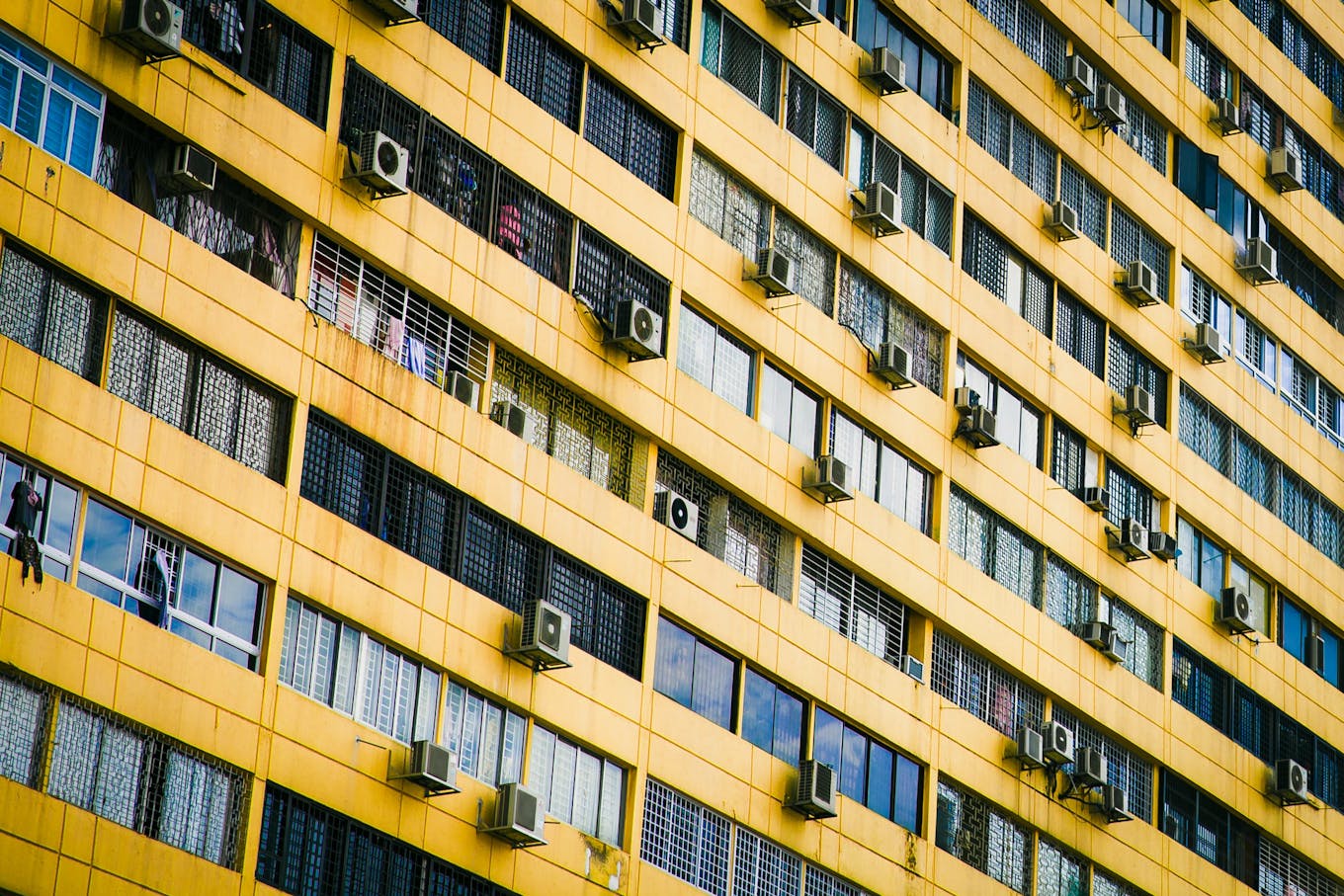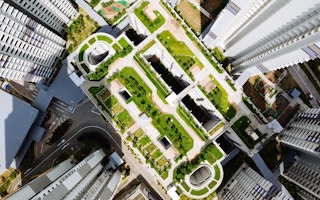The last eight years were the hottest on record. Almost 1 billion people are at high risk from extreme heat due to lack of cooling access - the vast majority living in Africa and Asia.
The need to come up with cooling solutions has reached a critical point, yet ironically, conventional cooling methods such as air conditioning are responsible for over seven per cent of global greenhouse gas (GHG) emissions.
Last month, the United Nations Environment Programme (UNEP) announced the development of a Global Cooling Pledge and a “Cool COP Menu of Actions” will be prioritised at the COP28 climate talks in November.
Sustainable cooling strategies are imperative but meaningful progress has been hampered by a range of obstacles.
What is sustainable cooling?
Sustainable cooling refers to the efficient and climate-friendly lowering of ambient temperatures and refrigeration. It can be achieved in several ways, such as lowering the energy consumption of cooling solutions, by utilising environmentally-friendly refrigerants, and through building design.
It is especially important to implement sustainable cooling in at-risk regions. Asia is home to about 60 per cent of the world’s population and 21 of the world’s 35 megacities.
“High population density and hot climates highlight the importance of cooling for quality of life,” said Professor Lee Poh Seng, executive director of the National University of Singapore’s (NUS) Energy Studies Institute. He also stated that Asia is home to emerging markets like China and India, where there is rapid economic growth, urbanisation and high population density, which drive demand for energy-guzzling cooling solutions.
Cooling solutions could account for 40 per cent of Southeast Asia’s electricity demand by 2040, according to a whitepaper by the Kigali Cooling Efficiency Program (K-CEP). In the same paper, over 45 per cent of respondents disagreed or strongly disagreed with the statement, “people in my country are aware of the harm that air-conditioning refrigerants do to the environment.”
Cooling tech
The best solution to keep places cool without heating the planet is architecture and urban planning that avoids the need for cooling solutions altogether. For instance, in Singapore, tall residential buildings have wider and larger windows to maximise wind flow. Wind corridors are also built by strategically positioning buildings, allowing for optimum cooling and ventilation.
Other passive cooling techniques include green roofing, adding shading devices, and installing double-glazed windows. These techniques minimise the heat gain of buildings by blocking, absorbing, and trapping heat from the sun.
Cooling innovations
Salt-desiccated cooling
Bill Gates’ clean energy investment fund, Breakthrough Energy Ventures invested US$20 million into Blue Frontier‘s air-conditioners which used a salt solution to remove humidity from the air without increasing its temperatures. About 30 per cent of the dry air is cooled and flowed to the rest of the air to cool down the remaining 70 per cent of air. These air-conditioners consume 50 to 90 per cent less energy and store energy at a fraction of the cost of batteries. They enable low-cost and low-emission electricity to suffice even during peak load times.
Solid-state cooling
Thermoelectric chip developer Phononic has developed a solid-state core that can be integrated into existing heating, ventilation, and air conditioning (HVAC) systems to soak up moisture from the air and enable air-conditioners to work more efficiently and lead to longer product life. According to the company, the core has the lowest Global Warming Potential (GWP) of 1, making it the lowest in the industry.
CO2 Cooling
Dalrada Financial Corp’s LikidoONE CO2-based heat pump has become part of the United States government’s contenders for GWP-lowering and emissions-reducing solutions. The heat pump uses heated fluid CO2 to efficiently recover heat from air, water, or thermal waste to be used in high-temperature applications. The usage of CO2 allows the pump to be seven to eight time more efficient than traditional appliances. LikidoONE can be used in virtually any temperature or climate condition and is installed the same way as traditional heat pumps.
Passive cooling is best deployed alongside new technology that can reduce the environmental footprint of cooling. The organic compound hydrofluroolefin (HFO), which is non-toxic and breaks down in the atmosphere within days, is being used in refrigerants to lower their contribution to global warming.
Last year, American engineering and technology company Honeywell launched a non-flammable and energy-efficient HFO-based refrigerant that uses 13 per cent less energy than hydroflurocarbon refrigerants and 30 per cent less energy than carbon dioxide refrigerants.
However, the safety of HFO refrigerants has been contended, such as in a proposal by the European Chemicals Agency (ECHA) from Denmark, Germany, the Netherlands, Norway, and Sweden to restrict the use of ‘forever chemicals’ which includes HFOs.
‘Forever chemicals’ are named so because they do not break down over time. In HFOs’ case, they do break down quickly in the atmosphere but degrade into trifluoroacetic acids (TFAs) which might end up contaminating water bodies.
Not all cooling solutions are high-tech. For example, an Indian company’s research into cooling solutions for informal homes found that installing discarded plastic bottles filled with water on to roofs in a lattice arrangement showed great promise in absorbing, storing, and releasing heat. Rooftop gardens are also among the most effective low-cost cooling solutions.
Financing models enable new, greener technology to be used at a lower cost. One with considerable potential is “cooling as a service”, when building owners rent rather than purchase air conditioning. This saves them the cost of buying, installing, and maintaining the cooling systems themselves. Service providers will have the flexibility to select sustainable technology and reallocate equipment as needed to maximise resources. This not only eliminates energy wastage but using advanced technology cuts emissions and creates better indoor experiences by adapting to changing indoor conditions.
The policy puzzle
Policy can be an effective instrument to drive sustainable cooling at scale, with popular policies including green buildings codes and standards, tax incentives, grants, and subsidies, says Dina Azhgaliyeva, a research fellow at the Asian Development Bank Insititute.
India was the first country to develop a National Cooling Action Plan (NCAP). Some of its targets include reducing cooling demand by 20 to 25 per cent and to reduce cooling energy requirements by 40 per cent by 2037 to 2038.
But not all policies work. Understanding the local context is key. Without the right policies for the given circumstances, there is a higher chance of encountering resistance from consumers, industry, and other key stakeholders.
An example of a problematic cooling policy takes place every year in Thailand. Energy Conservation Day tries to promote energy conservation in the Kingdom, including reducing the use of air-conditioning. However, the initiative has been criticised for being too focused on raising awareness and not being accompanied by concrete policies and incentives that encourage behaviour change.
A lack of awareness of the need for earth-friendly solutions is a common problem around the region. According to research conducted by public opinion and data analytics firm YouGov into consumer awareness of eco-labelling in Singapore, 95 per cent of respondents said they were aware of the National Environment Agency (NEA) Energy Label. But out of this, 57.2 per cent were only quite or slightly familiar with the meaning of the label.
In 2006, India’s Bureau of Energy Efficiency (BEE) introduced a star rating system for air conditioners with the aim of encouraging consumers to choose more energy-efficient models. But the system has not worked as intended, as many consumers are not aware of the ratings, and energy efficiency is very low on their list of priorities when making purchases.
Progress in sustainable cooling cannot be made without addressing affordability. According to Daniela Schmidt, an energy specialist at ADB, many existing energy efficiency approaches do not include tackling the issue of high upfront costs that come with efficient air-conditioners and result in low adoption rates. Even if the most efficient cooling systems are made available, there is no way that the almost 200 million people living in extreme poverty in developing Asia could access them without financial help.

Many households in developing countries can only afford inefficient air-conditioning, despite the fact that energy-efficient air-conditioners provide substantial savings in the long-run. Image: Unsplash/Isaac Benhesed
“Many households [in Thailand] can only afford inefficient air-conditioners. Seven in ten households choose this [less efficient] model even if it uses 42 per cent more electricity and will cost more over its product lifetime because that is what they can afford. Most efficient air-conditioners available in the market cost as much as a household’s entire monthly income,” she says.
But she also points out that government subsidy programmes have limited funding and are unsustainable. The lack of investment and consistent funding channels from other industry stakeholders undermine the effectiveness of subsidy programmes.
The road ahead
For policies to be effective, adaptation and adjustment to individual environments is not enough. Azhgaliyeva pointed out that it is also important to pay attention to the timeline and specificity of cooling-related targets.
With a moderated timeline where specific targets are updated and ramped up over time, allowance is made for the time needed to influence consumer behaviour, enact demand-reducing measures, and carry out projects to bolster the supply of sustainable cooling options.
When stakeholders do not feel as though they have been pressured to make changes without any help or safeguards, it smoothens the transition into the more ambitious policies involving energy-efficient cooling technology mandates across sectors and the phasing out of ozone-depleting refrigerants.
The education of consumers should come with information from both industry and academic sources so they have a wider and more objective understanding of the importance of sustainable cooling.
This would involve widespread promotion and marketing or programmes such as eco-labelling and tools to calculate the energy consumption and carbon footprint of cooling appliances. Consumers can also take proactive action by looking into online resources and committing themselves to sustainable cooling practices.
Rural populations and other low-income communities are often overlooked when it comes to cooling access. This is in spite of the 2 billion-plus people living in rural Asia, where, there is “limited access to financing, education, and infrastructure like energy grids,” says Lee.
Providing rural and other low-income communities with access to cooling would not only raise their quality of life and keep them safe from heat stress-related illnesses like heat stroke, but also protect their livelihoods, which are largely agriculture-based and threatened by upward-trending temperatures.
Rural areas are in great need of affordable, durable, and easily maintainable cooling. At the crux of this will be reliable access to electricity that can be used efficiently for cooling and other activities.
The Economist Intelligence Unit estimates that expanding electricity capacity to meet the rising demand for cooling will cost US$4.6 trillion over the next decade but shifting to more efficient cooling could not only significantly push these costs down but also usher in major financial opportunities.
By investing in efficient cooling, the cost of implementing renewable energy could fall by US$3.5 trillion by 2030, not to mention that rising demand for cooling could boost the market value for super-efficient cooling equipment to almost US$170 billion by the end of the decade.
Ultimately, the goal of sustainable cooling should be to “use balanced approaches to take into account the various benefits and needs associated with cooling and promote sustainable development for all,” Lee says.

















